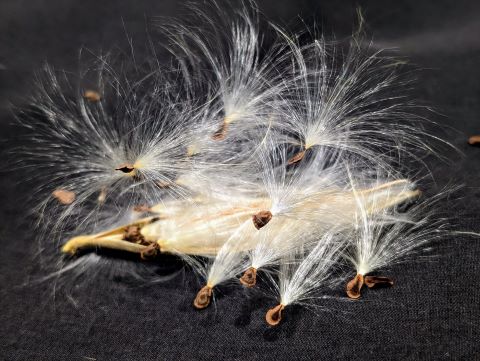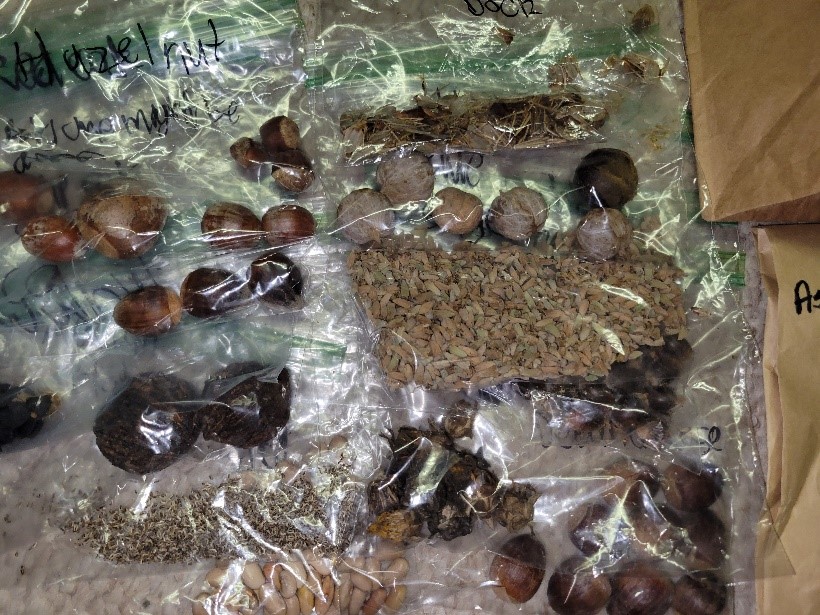 Fall Seed Collecting
Fall Seed Collecting
As fall brings cooler temperatures, perhaps you have noticed that your favorite landscape plant that once had a beautiful flower is looking a little faded and dull on top. Maybe it isn't exactly dull, but instead replaced by bright red berries, or fluffy seeds. This can be an opportunity to flex your Green Thumb abilities. Fall seed collection is a fun way to share the love with friends and neighbors.
Before you start, it is essential to understand some things about plant physiology. For example, seeds are often genetically different from the mother plant you collect from. This means the seeds when they grow might exhibit different characteristics such as flower color, leaf shape, and overall size. Genetic variability is especially noticeable when it comes to cultivated fruit trees. Fruit taste consistency does not easily pass down in the seeds.
When it comes to landscape plants, many plant breeding companies purposely select plants that do not produce seeds, or they only produce sterile seeds. They do this for a couple of reasons. Some plants will stop flowering to focus on seed production, and removing that process allows for more flowering potential. Another reason for the lack of seed production is the protection of the plant patents many large breeders have. If there were seeds out there that the producer did not sell, someone else could profit from their expensive breeding processes. Plants that are listed as heirloom varieties, however, are plants that do pass down their traits consistently to the next generation.
So, what seeds can you collect reliably? Native plants are usually going to be very close to the mother plant. Your tallest sunflowers and most floriferous asters are great candidates to collect in your landscape. But don't limit yourself to the prettiest flowers. Trees and shrubs should also be on your wish list. In our suburban landscape, woody trees and shrubs don't get to continue to sprout and grow as freely as some of their herbaceous counterparts. Acorns, hickory nuts, pinecones, and Kentucky coffee beans are great to collect and grow. Growing a tree can take a long time, but once it becomes mature, it can have tremendous landscape value.
 Seed storage is also something to consider. Not everything can be stored in a regular zip-up bag. Berries and fleshy fruits, for instance, need to be smashed and dried to separate the pulp from the seed. Leaving them in a plastic bag could lead to mold problems that compromise the seeds. Beans, green seed pods, and anything that doesn't have a hard seed coat have the potential to mold, and it is better to store them in an envelope or brown paper bag that is clearly labeled. On the other hand, if the seeds are tiny or so small that they are dust, storing them in a plastic bag that is also clearly labeled is the better option. Placing these seeds in a dry, cool place that doesn't receive direct sunlight will ensure their viability for next season.
Seed storage is also something to consider. Not everything can be stored in a regular zip-up bag. Berries and fleshy fruits, for instance, need to be smashed and dried to separate the pulp from the seed. Leaving them in a plastic bag could lead to mold problems that compromise the seeds. Beans, green seed pods, and anything that doesn't have a hard seed coat have the potential to mold, and it is better to store them in an envelope or brown paper bag that is clearly labeled. On the other hand, if the seeds are tiny or so small that they are dust, storing them in a plastic bag that is also clearly labeled is the better option. Placing these seeds in a dry, cool place that doesn't receive direct sunlight will ensure their viability for next season.
Collecting seeds also serves a purpose that you may not have thought about. By leaving your seeds in the landscape, leads to added volunteer plants expanding in areas that you didn't want them. Over time, this may lead to a concentration of one type of plant taking over your flowerbed. You be the judge on whether you are creating a bed of weeds, or a bed or desirable plants.
Leaving them for the birds and squirrels to enjoy can also be an acceptable and entertaining option.
by Markis Hill, Ornamentals and Turf Horticulture Extension Agent, 2024
Have questions?
The Garden Hotline is staffed by trained EMG volunteers and Extension staff who will assist you with questions. Phone: (913) 715-7050 Email: garden.help@jocogov.org